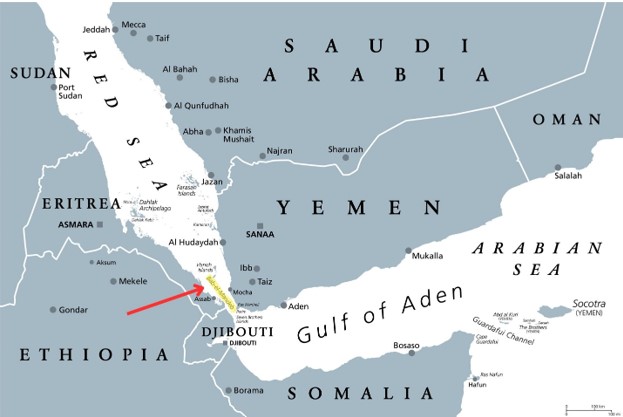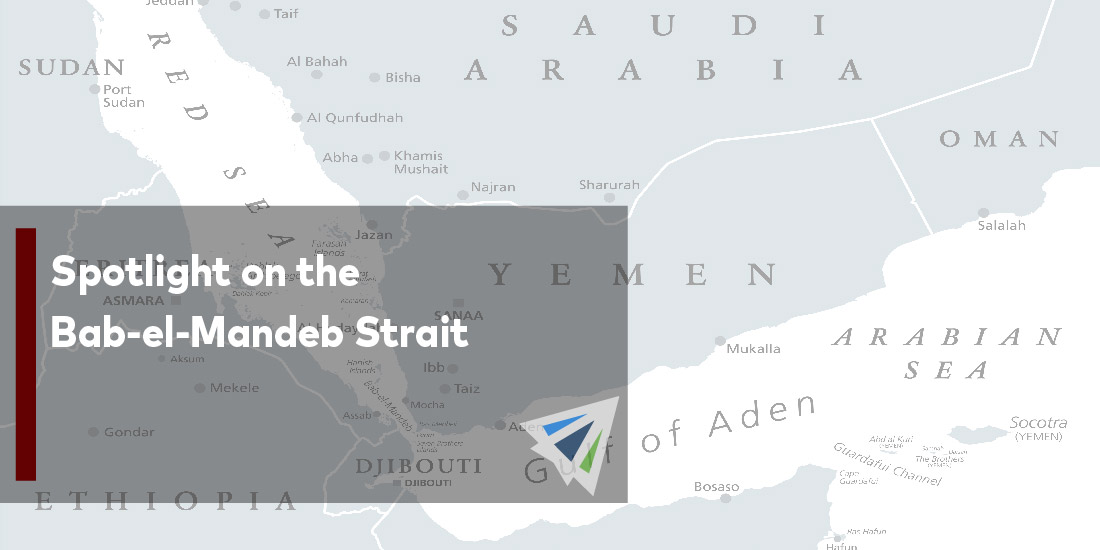The Bab-el-Mandeb Strait, translates to “Gate of Tears” in Arabic, is a narrow waterway located between the Arabian Peninsula and the Horn of Africa. Specifically, it connects the Red Sea to the Gulf of Aden and ultimately to the Arabian Sea.
This strait is strategically positioned at the southern entrance of the Red Sea, making it a crucial chokepoint for global shipping and trade.

Geopolitical Significance and Security Concerns
This strait is a crucial maritime passage that facilitates shipping between Europe, Asia, and the eastern coast of Africa. It serves as a gateway for vessels traveling to and from the Suez Canal, enabling access to the Mediterranean Sea from the Indian Ocean and beyond.
Due to its strategic importance, the security of the strait is of international concern. Its proximity to unstable regions, such as Yemen and Somalia, has made it susceptible to piracy and other security threats over the years. International efforts, including naval patrols and security agreements, are in place to ensure safe passage through the strait.
Trade Route and Economic Impact
Known as one of the world’s busiest and most important trade routes, handling a significant portion of global trade in commodities such as oil, natural gas, and other goods. Many tankers carrying oil from the Middle East pass through this strait on their way to Europe and Asia.
Disruptions or closures of this strait can have significant economic repercussions globally. Any interruption in maritime traffic through this route can affect the supply and prices of goods transported via this critical passage.
Closure of this strait could keep tankers originating in the Persian Gulf from transiting the Suez Canal or reaching the SUMED Pipeline, forcing them to divert around the southern tip of Africa, which would increase transit time and shipping costs.
Back in 2021, the Suez Canal – a waterway connecting the Mediterranean Sea to the Red Sea – experienced a blockage when container ship, Ever Given, blocked one of the biggest global trade routes for a week. Keep in mind that the Suez Canal handles approximately 12 percent of total global trade.
The Suez Canal’s Place in the Bab-el-Mandeb Strait
We just mentioned the Suez Canal, but what is the Canal’s place in the Bab-el-Mandeb Strait? For background, the Canal is an artificial waterway at sea level that spans the Isthmus of Suez in Egypt, connecting the Mediterranean Sea to the Red Sea in a north-south direction. It divides the continents of Africa and Asia and serves as the shortest maritime route between Europe and the regions bordering the Indian and western Pacific oceans.
Modern ships extensively utilize the Suez Canal due to its efficiency in linking the Atlantic Ocean with the Indian Ocean. The Canal is unique in that it can accommodate 24,000 TEU supercarriers, that are built for economies of scale and cost effectiveness.
In the past year, the Suez Canal has faced challenges due to the geopolitical issues in the Middle East. Some transits have been impacted due to the threat of vessels being targeted as they travel through the Red Sea.
Some major shipping corporations have rerouted their ships away from the region due to the targeting of vessels in critical maritime chokepoints including the Gulf of Aden and the Bab al-Mandab Strait. This has resulted in a substantial reduction in transit via the Suez Canal, as some vessels chose to divert and go around through the Cape of Good Hope – this does add extra milage.
Looking Ahead
Global straits, such as the Bab-el-Mandeb Strait, play a pivotal role in global shipping and trade, connecting major maritime routes and facilitating the movement of goods. Its geopolitical and economic significance underscores its status as a critical waterway in international commerce and security. Nevertheless, any disturbances to these maritime routes can significantly disrupt global trade.
Should you have any questions regarding this, please reach out to our team today. Additionally, we have our weekly market updates that provide freight news, updates, and other developments across the international shipping industry.
